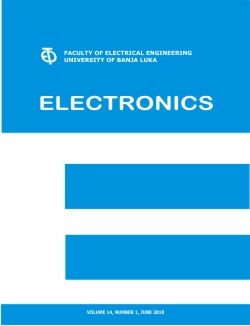A Study of Inverter Drives and Its Ride Through Capabilities in Industrial Applications
DOI:
https://doi.org/10.7251/ELS1822005VAbstract
In modern industry, majority of the mechanical elements are driven by either induction motors or special motors like servo motors, synchronous motors, BLDC motors. In order to drive the motors and to vary the speed of the motors, electronics drives are required. Since the drives are powered with three phase AC, if the power grid has power quality issue, which directly reflects on to the power electronics drives. As per Indian grid standards, power quality is defined as harmonics, surge, sag, swell, which was formulated in the year of 2003 and further revision was done in 2010. But in the recent day’s majority of the industries are constructed in same place (special economic zone), unpredicted industrial loads are increased and inserted in to existing running load, so eventually the power quality definition also changes and even sometimes connections are made as temporary for certain loads. Although these motors typically tolerate variations in utilization voltage, power quality professionals continue to spend a great deal of time answering questions about proper utilization voltage for a given motor. The voltage quality factors that create the most serious problems and confusion in the field include nominal utilization voltage that does not match the motor nameplate, proper voltage sag ride-through protection for the motor control circuitry, and phase-to-phase voltage imbalance. In review article, modern industry premises failure of components list and condition of power quality will be surveyed in various segments. Various failure of inverter drives namely, switching failure, commutation failure, common mode voltage problem, bearing current issues, harmonics etc., are discussed in details from various research article and presented in this review.Downloads
Published
2018-08-27
Issue
Section
Чланци

